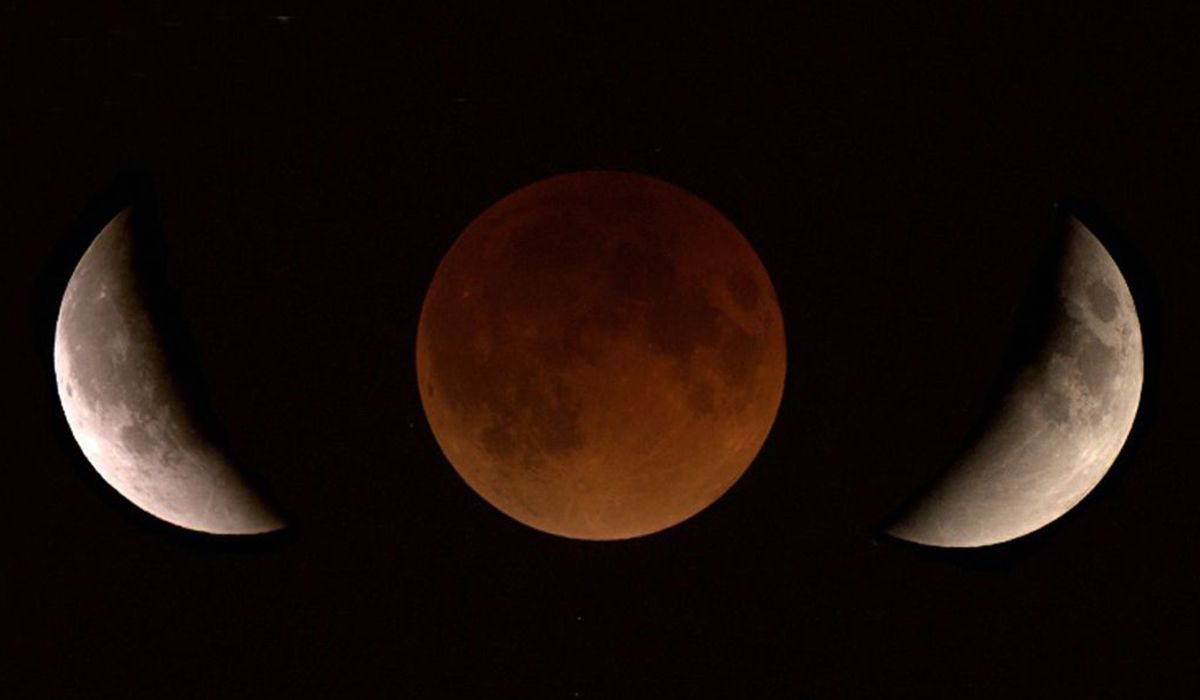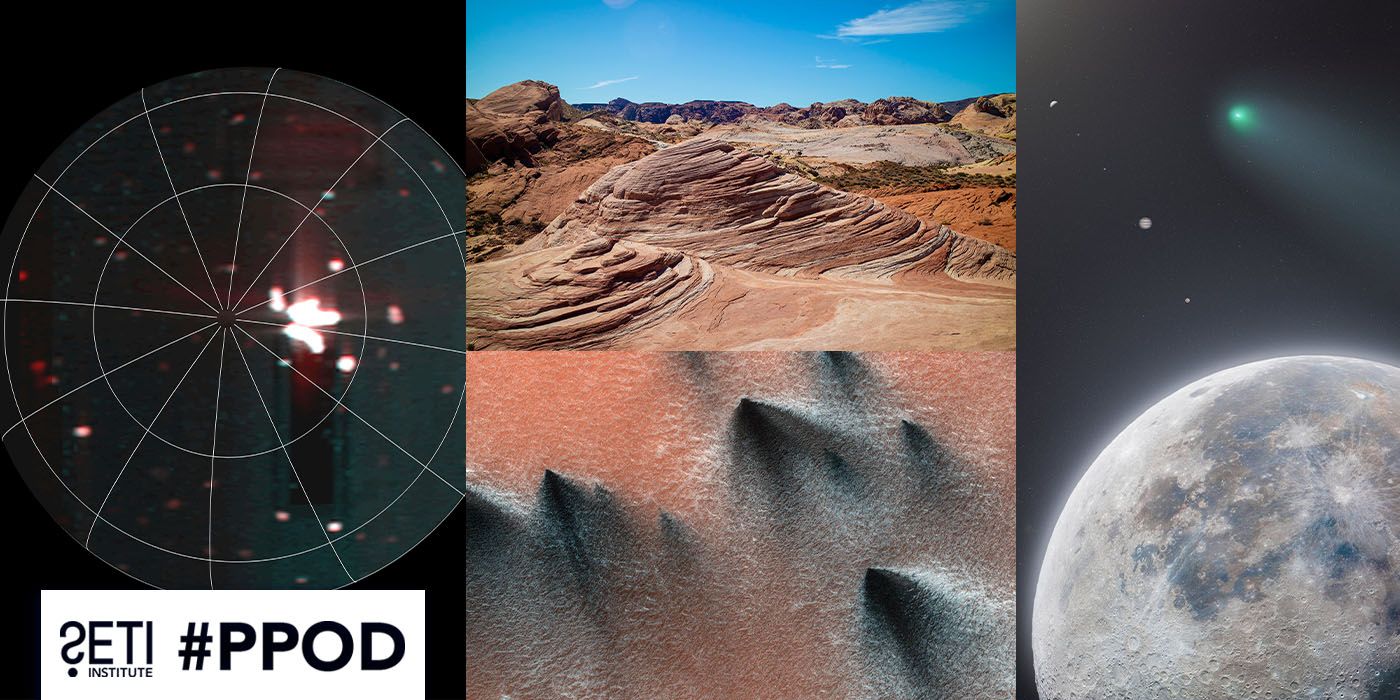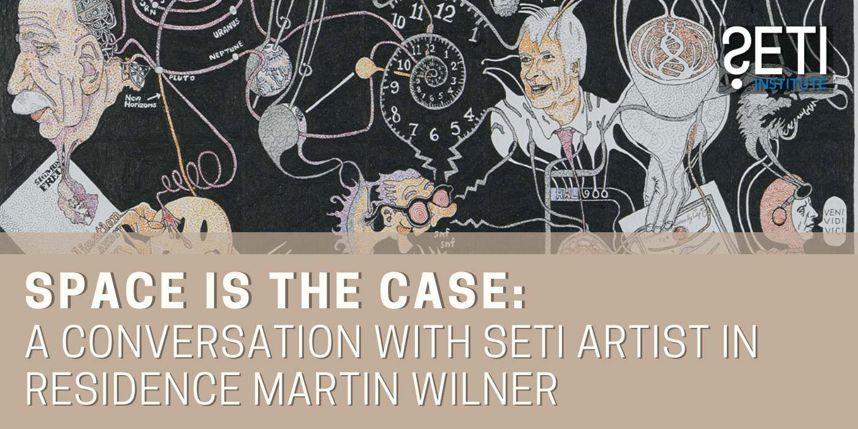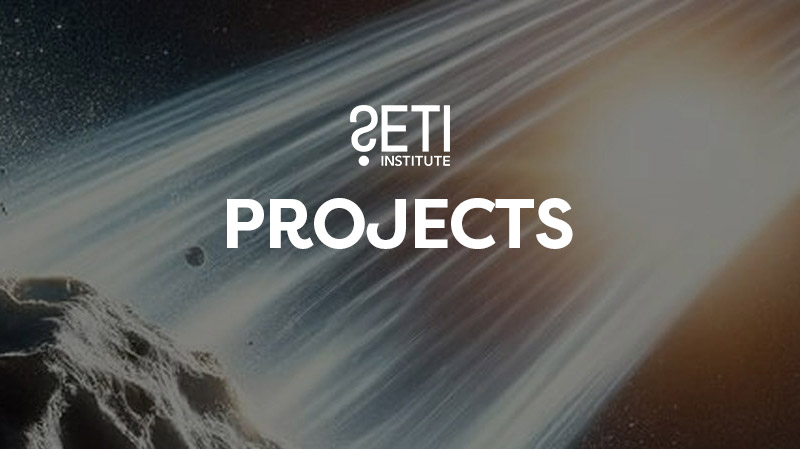
This month at the SETI Institute, exciting developments are shaping our understanding of the cosmos and the search for extraterrestrial life.
Dr. Sofia Sheikh led a study exploring how alien civilizations might detect Earth through our radio signals and atmospheric pollution. Dr. Pascal Lee stepped into a new role as Vice President for Planetary Development at the National Space Society, helping to drive future exploration of the Moon and Mars. New observations have ruled out any risk of asteroid 2024 YR4 colliding with Earth, though there’s still a small chance it could strike the Moon in 2032.
Meanwhile, the Hat Creek Radio Observatory continues its vital role in SETI research with the Allen Telescope Array. Lastly, a study of a potential Dyson sphere candidate found some signals were from natural cosmic sources, but six candidates remain under investigation, highlighting the need for multi-wavelength analysis in the search for extraterrestrial life. Through these initiatives, the SETI Institute continues to explore space and the possibility of life beyond Earth.

If Aliens Looked at Earth from Far Away, What Might They See?
A team of astronomers led by Dr. Sofia Sheikh at the SETI Institute studied how detectable Earth might be to alien civilizations. Their research, published in The Astronomical Journal, analyzed signals like radio transmissions, pollution, and city lights. They found that powerful radio signals could be detected up to 12,000 light-years away, while weaker signals, like cell phone emissions, reach only a few light-years. Other indicators, such as atmospheric pollution, have even shorter ranges. This study helps refine SETI’s search by considering how an alien civilization with technology similar to ours might detect us.
Read the full article by Scientific American here: If Aliens Looked at Earth from Far Away, What Might They See?
Dr. Pascal Lee Appointed as National Space Society Vice President For Planetary Development
Dr. Pascal Lee, planetary scientist at the SETI Institute and NASA Ames, has been appointed as the Vice President for Planetary Development at the National Space Society (NSS). A long-time NSS member and Space Pioneer Award recipient, Lee brings extensive experience in Mars science and human exploration. In his new role, he will focus on advancing the exploration and development of the Moon and Mars while strengthening NSS’s collaboration with NASA and the scientific community. “The NSS team looks forward to working with Dr. Lee in crafting NSS strategy and projects with regard to Mars and the Moon,” said Dale Skran, NSS COO and SVP.
Read the full article by AP News here: Dr. Pascal Lee Appointed as National Space Society Vice President For Planetary Development

(Final?) Update on Asteroid 2024 YR4
New data on asteroid 2024 YR4 now reduces its impact risk on Earth to just 0.004%. Although it briefly set a high Torino Scale rating with a 3.1% collision chance for 2032, further observations have ruled out any dangerous encounter. There remains about a 1% chance it could hit the Moon on Dec 22, 2032, which might produce a visible impact flash and a crater.
Michael Busch of the SETI Institute, noted that an explosion on the Moon "would be very obvious to any spacecraft observing from lunar orbit" but may not be as visible to the unaided eye from Earth due to the Moon's brightness.
Read the full article by Daily Kos here: (Final?) Update on Asteroid 2024 YR4

Hat Creek Radio Observatory
Hat Creek Radio Observatory, operated by the SETI Institute, is home to the Allen Telescope Array (ATA), the first telescope designed specifically for SETI research. Funded in part by Microsoft co-founder Paul Allen, the ATA consists of 42 antennas. reconfigurable dishes that work together, covering frequencies from 1GHz-12GHz. Its advanced electronics allow it to multitask, conducting SETI searches while performing conventional radio astronomy. Originally run by UC Berkeley and later SRI International, Hat Creek continues to be a key site for astronomical discoveries.
Read the full article by Atlas Obscura here: Hat Creek Radio Observatory

High-Resolution Imaging of Dyson Sphere Candidate Reveals No Radio Signals
A study led by the University of Manchester and including the SETI Institute’s Dr. Andrew Siemion examined a possible Dyson sphere,a megastructure that could indicate an advanced alien civilization. The object was identified by Project Hephaistos, a Swedish effort searching for signs of alien technology.
With high-resolution radio observations, researchers found that some signals thought to be from Dyson spheres were actually caused by background active galactic nuclei (AGN) or dust-obscured galaxies (DOGs). While this rules out some candidates, six remain under investigation. The findings highlight the importance of multi-wavelength analysis in distinguishing artificial structures from natural cosmic sources.
Read the full article by Phys.org here: High-resolution imaging of Dyson sphere candidate reveals no radio signals
News
Related News

Total Eclipse of the Moon Coming to the Americas on the Night of March 13-14
Photo by Brian Day NASA #SETI Institute in the News
Earth Detecting Earth
Figure 1. The maximum distances that each of Earth’s modern-day technosignatures could be detected at using modern-day receiving technology, in visual form. Also marked are various astronomical objects of interest. #SETI Institute in the News
Planetary Picture of the Day - Week of January 27, 2025
Planetary Picture of the Day - Week of January 27, 2025 #SETI Institute in the News
Asteroids, Neon Cats & Music From The Moon – London Becomes A Free Cosmic Playground
#SETI Institute in the News
SETI Institute in the News: February Roundup
SETI Institute in the News: February Roundup #SETI Institute in the News
Space is the Case: A Conversation with SETI Artist in Residence Martin Wilner
#SETI Institute in the NewsResearch
Related Projects

Lorem ipsum
Lorem ipsum dolor sit amet #SETI Institute in the News
Nemo enim ipsam voluptatem
Nemo enim ipsam voluptatem quia voluptas sit #SETI Institute in the News
Duis aute irure
Duis aute irure dolor in reprehenderit in voluptate #SETI Institute in the NewsSupport the
SETI Institute
Scientists are getting closer in their search for life beyond earth. But with limited federal funding for the search for extraterrestrial intelligence, supporters are the reason cutting-edge scientists can keep their eyes on the sky.

)
